UNESCO has just recognized Ha Long Bay - Cat Ba Islands, located in Quang Ninh province and Hai Phong city, as a world natural heritage. So far, Vietnam has 9 heritage sites recognized by UNESCO as world natural and cultural heritages, including 5 cultural heritages, 3 natural heritages and 1 mixed heritage.
UNESCO has just recognized Ha Long Bay - Cat Ba Islands, located in Quang Ninh province and Hai Phong city, as a world natural heritage. So far, Vietnam has 9 heritage sites recognized by UNESCO as world natural and cultural heritages, including 5 cultural heritages, 3 natural heritages and 1 mixed heritage.
Ha Long Bay - Cat Ba Archipelago is recognized as a World Natural Heritage
Vietnam's 3 UNESCO heritage sites are among the most worth visiting in Southeast Asia
Hue Monuments Complex

An ancient, poetic corner of Hue city. Photo: Hoang Le
In December 1993, the Hue Monuments Complex was officially named on the UNESCO World Cultural Heritage list. This is Vietnam's first cultural heritage recognized by UNESCO as a World Cultural Heritage.
For nearly 400 years (1558 - 1945), Hue was the capital of 9 Nguyen Lords (16th - 18th centuries) in Dang Trong, the capital of the Tay Son dynasty (late 18th century), then the capital of the The country was unified under the 13 reigns of King Nguyen (1802 - 1945).
The ancient capital of Hue today still preserves tangible and intangible cultural heritage containing many values that represent the intelligence and soul of the Vietnamese people. According to researchers, among the ancient capitals of Vietnam, Hue is the only place that still preserves the overall integrity of royal architecture and art, with a system of citadels, palaces, shrines, and temples. , mausoleum…
Ha Long Bay
In 1994, Ha Long Bay was recognized by UNESCO as a world natural heritage for its aesthetic value and was recognized a second time for its geological and geomorphological value in 2000.

Photo: Vuong Loc
The island population in Ha Long Bay has two main types: limestone islands and schist islands. Although the number of islands in Ha Long Bay is very large, no island is the same, creating a unique landscape that only Ha Long has.
Based on this shape and people's imagination, the islands here have been given very familiar and simple names such as Nguoi's Head Island, Trong Mai Island, Dragon Island, Ong Su Island, Chopstick Island... Besides, some islands are also named after folk legends such as Bai Tho mountain, Trinh Nu cave, Tuan Chau island or unique features on the island such as Ngoc Vung island, Kien Vang island, Monkey island...
My Son relic
According to the Department of Cultural Heritage, My Son Cham Relics is located in a narrow valley, in My Son village, Duy Phu commune, Duy Xuyen district, Quang Nam province. The temple tower at My Son represents Champa religious architecture.

Photo: My Son Heritage Management Board/www.disanvanhoamyson.vn
Most of the temples and auxiliary buildings are built of bricks with sophisticated techniques. Decorative motifs on stone pillars along with round statues and sandstone reliefs carved based on Hindu mythology... A harmonious combination with sophisticated carved motifs on the walls. Bricks on the outside of the tower have made the My Son temple complex lively, bearing the characteristics of Champa art styles.
My Son relic site was officially recognized by UNESCO's World Heritage Committee as a World Cultural Heritage in December 1999.
Hoi An
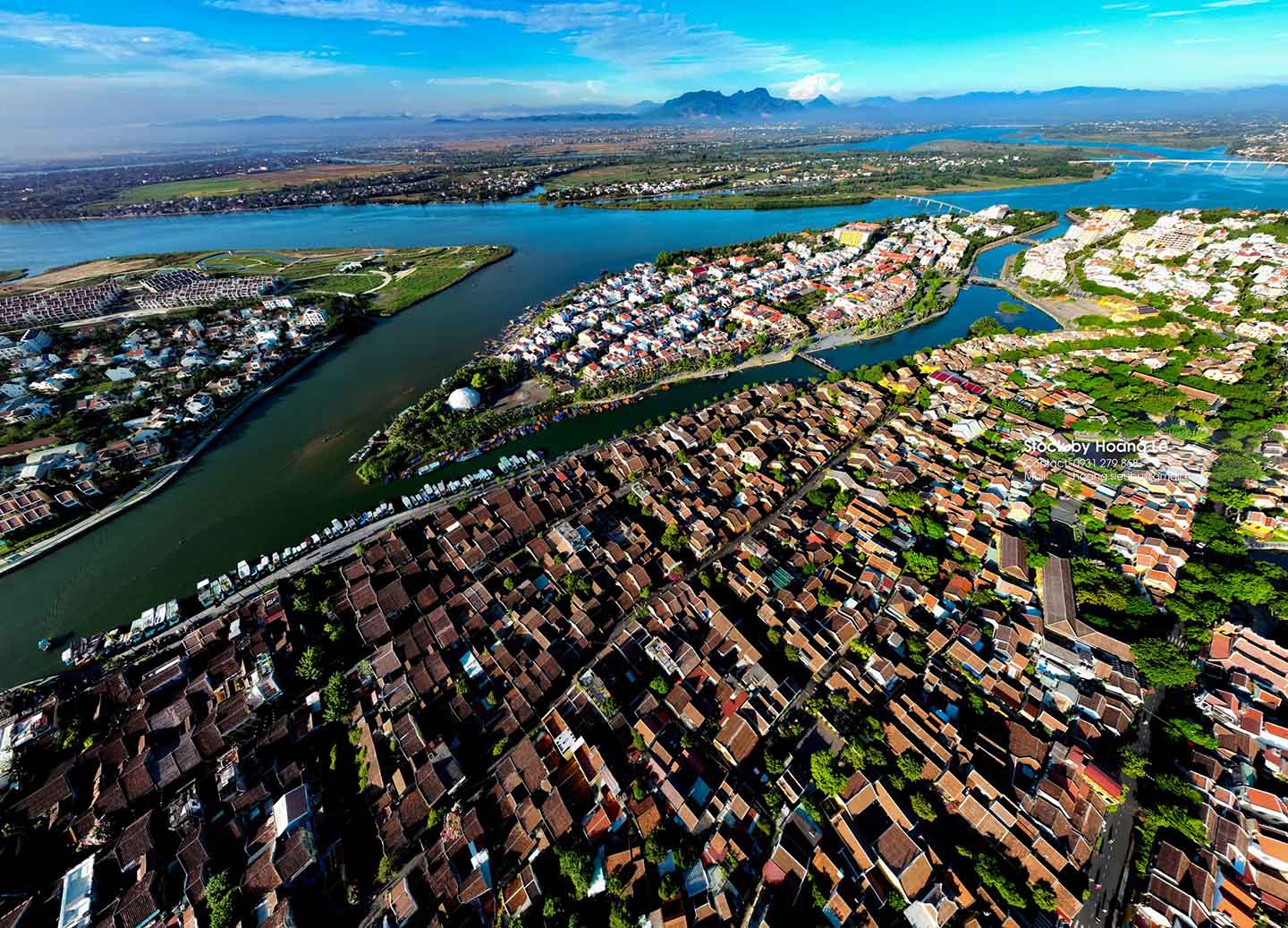
Hoi An ancient town viewed from above. Photo: Hoang Le
Hoi An ancient town is a famous tourist city of Quang Nam province. In addition to cultural values through diverse architecture, Hoi An also preserves a massive intangible cultural foundation. As a traditional port town in Southeast Asia, rare in the world, through many ups and downs of history, Hoi An has still maintained almost its original state with about 1,360 relics.
Hoi An is famous for its traditional, harmonious architectural beauty of ancient houses, walls and roads. Even though hundreds of years have passed through many events, this place still retains its ancient, quiet beauty, moss on every tiled roof, row of trees...
Phong Nha - Ke Bang National Park

The beauty of Hang Va belongs to Phong Nha - Ke Bang National Park. Photo: Ryan Debooth
Phong Nha - Ke Bang National Park and surrounding areas include part of Bo Trach, Tuyen Hoa and Quang Ninh districts. Most of the core area of Phong Nha - Ke Bang National Park is limestone mountains. With intensely divided karst terrain and evergreen tropical vegetation on limestone mountains, Phong Nha - Ke Bang National Park has biological diversity and unique geology and geomorphology.
Phong Nha - Ke Bang area has a complex of more than 300 diverse, large and small caves, known as the "Kingdom of Caves", a place with many strange and attractive things, a paradise for scientists. cavers, explorers and tourists.
Imperial Citadel of Thang Long
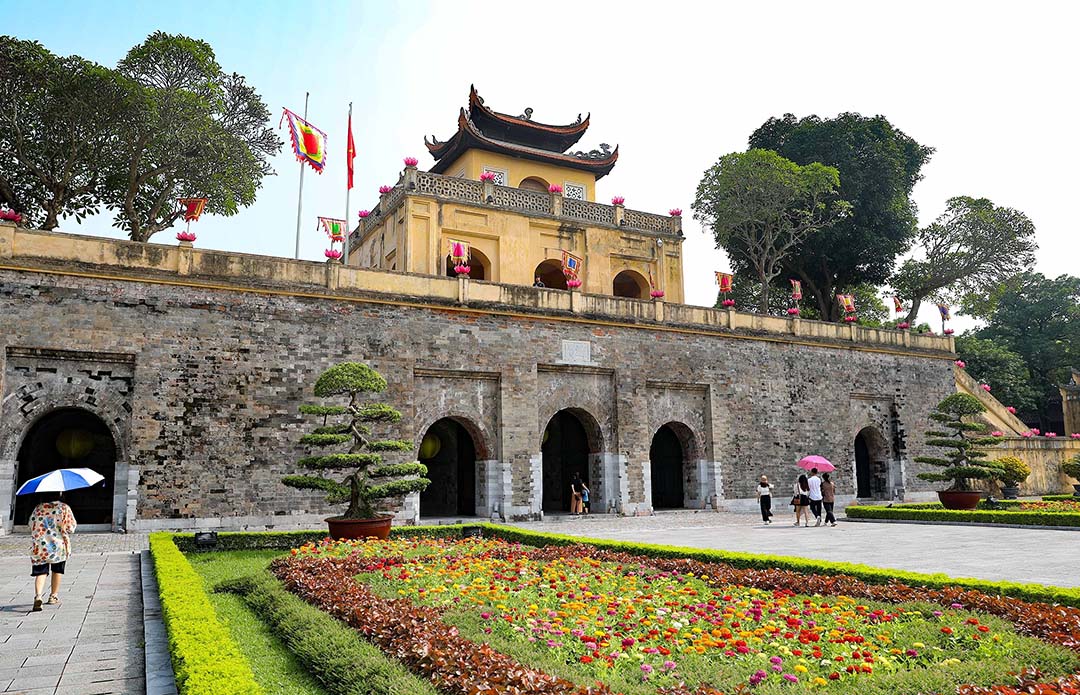
Thang Long Imperial Citadel Relics. Photo: TTXVN
Thang Long Imperial Citadel is a complex of relics associated with the history of Thang Long - Hanoi capital. This massive architectural work was built by dynasties during many historical periods and became the most important monument in the system of Vietnamese monuments.
According to the National Tourism Administration, along with the nation's history over the past 10 centuries, the Imperial Citadel of Thang Long - Hanoi has undergone many changes. Here, archaeologists have unearthed a large number of ceramics that were everyday items used in the royal palace over many periods of time. In addition, many bronze coins and ceramics from China, Japan, West Asia... found here are evidence that Thang Long was once a center of cultural exchange with regional countries and received quintessential human values.
Citadel of the Ho Dynasty
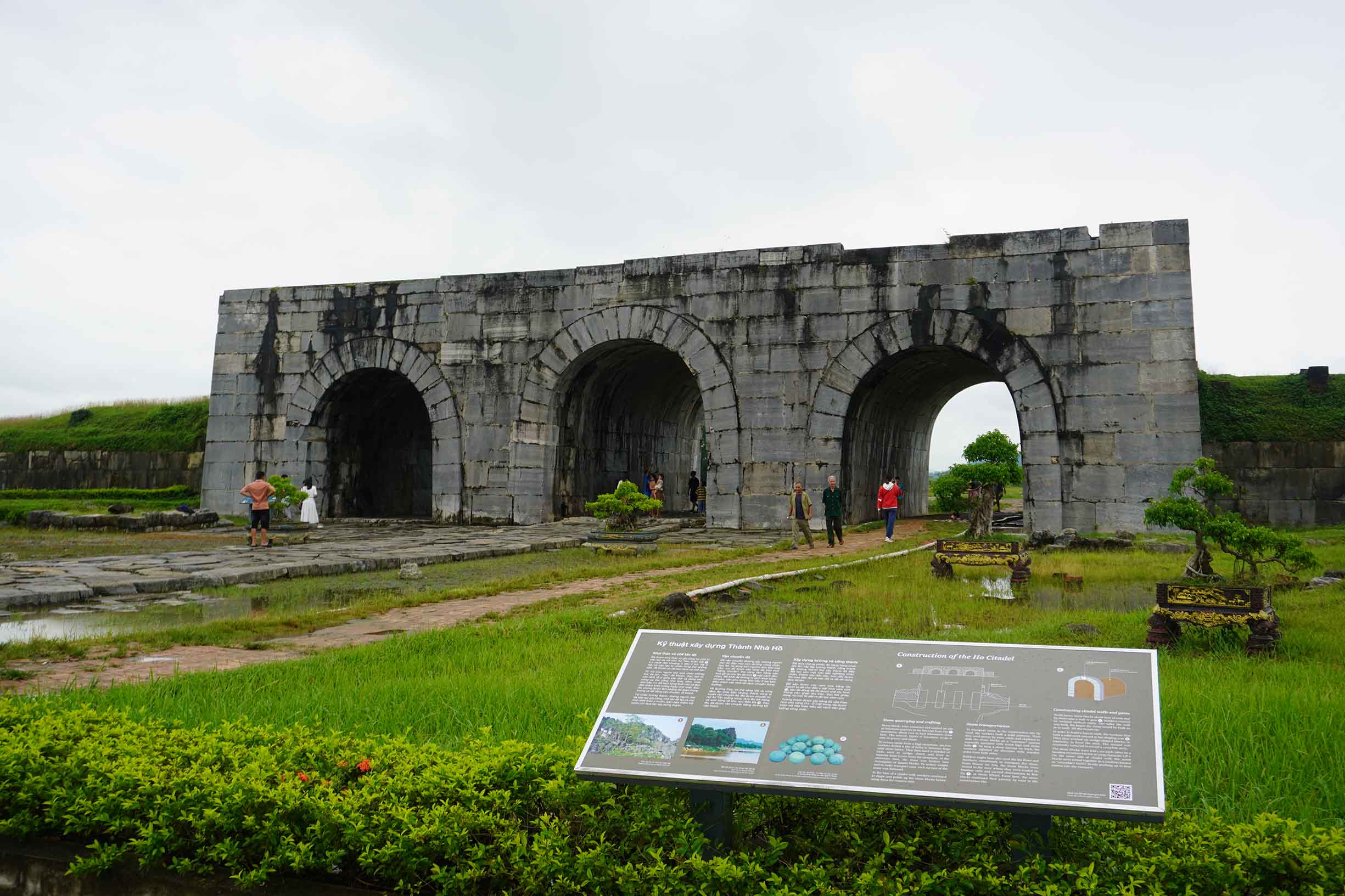
Ho Dynasty Citadel is a solid citadel with unique stone architecture. Photo: Nguyen Phong
Ho Dynasty Citadel, also known as Tay Do Citadel in Vinh Long and Vinh Tien communes, Vinh Loc district, Thanh Hoa province, is one of the most unique stone architectural works in Vietnam and the world. The entire city wall and four main gates were built of blue limestone slabs, finely chiseled, square, and stacked tightly on top of each other without the need for adhesives.
The project was built by Ho Quy Ly in 1397, also known as Tay Do to distinguish it from Dong Do (Thang Long - Hanoi), once considered the capital and socio-political and cultural center of Dai Viet. Stupidity under the Ho Dynasty. With outstanding global values of culture, architecture and history, in June 2011, the Ho Dynasty Citadel was recognized by UNESCO as a World Cultural Heritage.
Trang An scenic complex
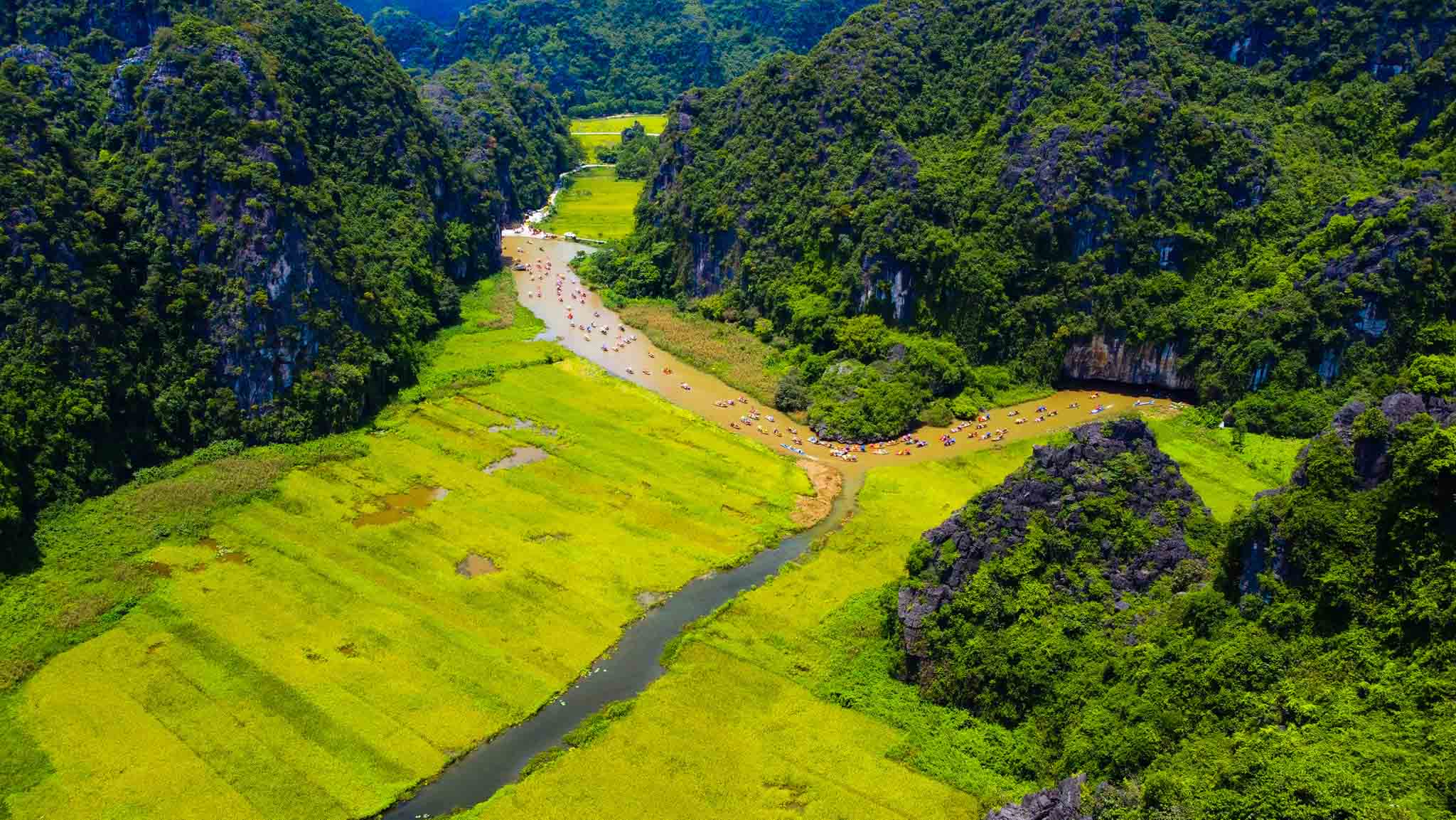
Trang An scenic complex has been registered by UNESCO as a world heritage site, becoming the first mixed heritage of Vietnam and Southeast Asia to be recognized by UNESCO. Photo: Vuong Loc
Converging all the criteria of culture, aesthetic beauty, and geology with outstanding global values, Trang An Scenic Landscape Complex has been registered by UNESCO on the list of world heritage, becoming a mixed heritage. The first union of Vietnam and Southeast Asia to be recognized by UNESCO.
Trang An scenic complex has an area of 6,172 hectares in Hoa Lu, Gia Vien, Nho Quan districts, Tam Diep town and Ninh Binh city, Ninh Binh province. Trang An scenic complex includes three adjacent protected areas: Hoa Lu ancient capital historical and cultural relic area, Trang An - Tam Coc - Bich Dong scenic area and Hoa Lu special-use primeval forest.
Ha Long Bay – Cat Ba Islands
Ha Long Bay - Cat Ba Archipelago is recognized by UNESCO as a World Heritage Site because it has areas of natural beauty including limestone islands covered with vegetation; Sharp limestone peaks rising above the sea surface along with associated karst features such as domes and caves.
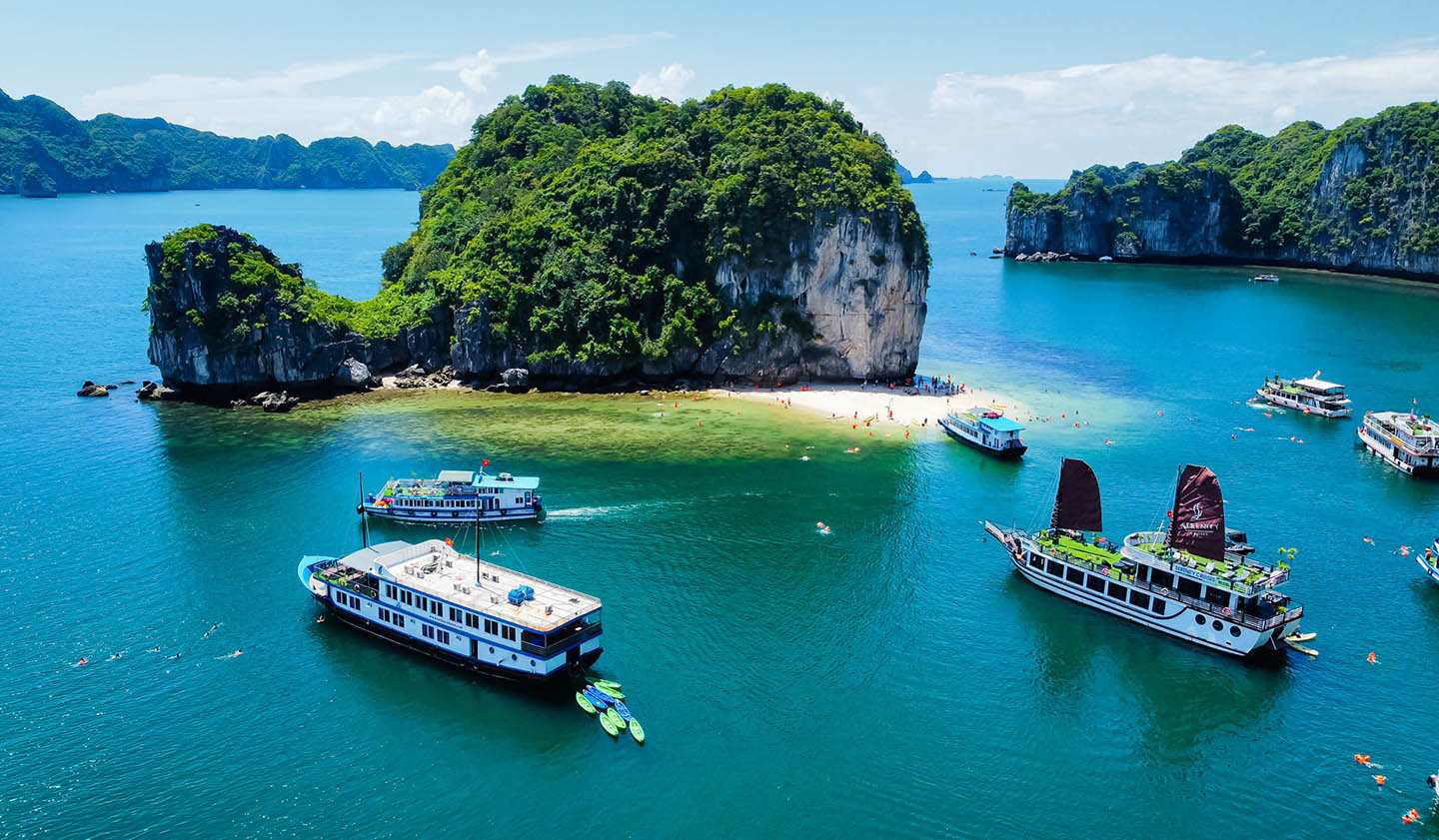
Lan Ha Bay, belongs to Cat Ba archipelago. Photo: Vuong Loc
With 1,133 limestone islands of various shapes and sizes (775 limestone islands of Ha Long Bay and 358 limestone islands of Cat Ba Archipelago) covered with rich vegetation on sparkling emerald water, the Bay Ha Long - Cat Ba Archipelago appears like a chessboard made of precious stones; Lush, peaceful water and smooth white sand beaches.
With the interference of mountains, forests and islands, Ha Long Bay - Cat Ba Archipelago has a high level of diversity in Asia, possessing 7 adjacent, tropical and subtropical marine - island ecosystems. each other develop. The first inter-provincial world heritage site of Ha Long Bay - Cat Ba Archipelago registered by UNESCO will be an important premise, contributing experience and practice, towards building an inter-provincial and inter-border heritage management model. gender.
Quang Ninh
3577 view
Update day
: 24/09/2023
Nguyên Phong tổng hợp ; Theo Cục Du lịch Quốc gia, Cục Di sản Văn hóa, TTXVN


 vn
vn en
en ja
ja ko
ko zh
zh
































































































